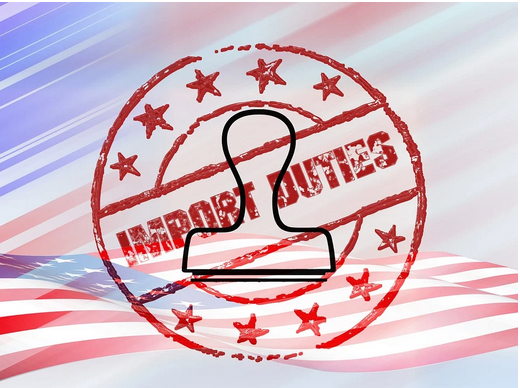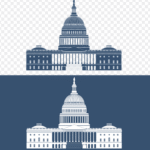Tariff and Trade talks related to the United States are keeping the market participants on their toes as they tend to impact the bond and stock markets significantly, which traders are now watching closely. Expect more focus on these talks over the coming week as investors weigh the economic impact of tariff policies.
Tariff Development Impact on the Market
The Treasury market, which serves as a barometer for U.S. financial conditions, remains vulnerable to moves tied to uncertainty over the Trump administration’s tariff policies. With the final levels for the tariffs and overall economic outlook still up in the air, violent sell-offs and rallies have the potential to occur.
Worries over a recession in the United States, inflation, and a fading appeal for U.S. assets are feeding market jitters. Such events could spark major Treasury bond sell-offs, which would ripple through world bond and stock markets and would also drive up the cost of borrowing for the individual.
The rising cost of living and the response of the Federal Reserve to Tariff
Tariff-induced inflation also complicates the Fed’s ability to implement the correct monetary policy. If inflation indeed turns into a serious issue, market participants, who are priced for several interest-rate cuts, may be disappointed.
With little major economic data due in the week ahead, trade negotiations—especially those with Japan and possibly China—should remain a key theme. Investors are weighing whether the early April market volatility is the start of a prolonged period of turbulence.
Market Behavior Based on Investor Growth Expectations
It’s indicative of investors’ strong appetite for good news in the two sides’ trade negotiations. The limited market reaction to reports of U.S.-Japan talks nearing agreement only highlights the cloud of uncertainty surrounding the U.S. trade outlook.
The increase in the average U.S. tariff on goods coming into the country has also ramped up, a sign that the Trump administration has shifted toward harmful protectionist trade policies. Investors are watching to see what the real level of tariffs will be at the end of the 90-day truce, which runs out at the end of July.
Treasury Market Dynamics and Inflationary Outlook
Economic analysis suggests that tariffs are likely to push inflation up to record highs for at least the next 12 months. That view is embedded in market instruments that indicate readings of the consumer price index exceed 3%.
Herd demand has ebbed for Treasury inflation-protected securities (TIPS) amid mounting trepidation over the U.S. economy and the Treasury’s borrowing plans. Inflation can be a “temporary shock” — but some market analysts fear it will become entrenched.
Other Key Insights
The bond market’s selloff and rally can be very aggressive, and this is primarily because the prevailing macro environment is diverse and inclusive. Although Treasury bonds have some safe-haven status, some are wondering whether they are a long-term buy at all.
This upcoming week will shed some light on how the newest round of tariff implementation is affecting the economy with purchasing managers’ index data as well as consumer sentiment data releases. Whether Treasury bonds will keep their safe-haven role remains hotly debated.
Imposing a tariff changes the game of international trade, and a small tariff can do that. A tariff is a tax on imported products and may lead to an increase in price for disequilibrium consumers. How the effects of a tariff are felt throughout an economy. Tariff-related talks always tend to create a cloud of uncertainty in the market. Such uncertainty may cause investors to evaluate the economic consequences of every tariff with caution. A tariff can ignite the retaliatory actions of other countries. The Fed also has to think about what effect a tariff may have on monetary policy. We must pay attention to economic data, because only at the end of the day are we able to determine the true impact that a tariff has, actually becomes evident through measure of economic data. It can have a long-term impact with a tariff forcing international trade relationships to be reorganized. In any case, the analysis of tariff effects is still crucial for a deeper understanding of its complex economic consequences.
At its core, a tariff is nothing more than a tax that a government can impose when goods or services are imported from abroad. As foreign goods become pricier relative to domestic products, it serves as this tariff. Often the objective of a tariff is to provide government revenue, or protect domestic industries against foreign competition by raising the price of imported goods, or to exert political leverage over another country. Tariff includes specific tariff (X fee per item), ad valorem tariff (X percent of value), and compound tariff. Imposing a tariff has complex economic implications. From the point of view of home producers, a tariff may boost demand for locally made products due to an increased price for any foreign alternatives. At the same time, the tariff protection may also reduce the incentive for local industries to become more efficient and competitive.
The tariff is borne by consumers with higher prices for the imported goods, reducing consumers’ real purchasing power and their welfare. A tariff can shake up global supply chains, especially for firms that rely on overseas components, and may thus inflate their costs of production. Imposing a tariff may also lead some other nations to retaliate, which will result in a trade war with a series of tariff barriers between two countries and even more countries; it damages foreign trade in the long-term and overall economic growth.
Alternately, although a tariff may serve to protect certain local industries from competition in the near term, most economists argue that the long-term economic impact of a tariff is harmful, as it impedes free trade and lowers economic welfare. In international trade policy, you hear discussions about whether a tariff is even effective, or its effect, or its consequences, or whether we should strategically use a tariff to protect national interest, or whether that is the correct economic approach or whether lower tariff and freer trade are the way to go, and so on. Depending where and when you are we’re all dealing, the application and effects of a tariff have always changed with the circumstances of an area and/or a time, the economic and political climate of the now.
Market volatility is the pace at which the price of a security increases or decreases for a specific security or market index. This similarity is called high market volatility and it is often associated with uncertainty for investors because prices may vary drastically and in a fast way. Several events can cause this market volatility such as the economic news and political events, investor sentiment changes and unexpected global events. Investors may see their portfolios fluctuate wildly in value, when volatility is high. Risk management involves understanding risk, and in the context of investing, market volatility is an essential ingredient to figuring out what kind of losses an investor may face. In fact, a history of the silver market and the high market volatility it possess can be scary, but on the same token such volatility can be welcome for traders who look to profit from short-term price changes. On the flip side, low market volatility in the market indicates that a price is more steady and is less likely to rise or fall significantly. The VIX index is one of the tools investors use to track market volatility expectations for the near term.






